Baker’s percentage, or baker’s percent, is a method of measuring the quantity of ingredients in a dough, relative to the amount of flour in the dough.
I know this sounds confusing but bear with me, it’s not too bad really.
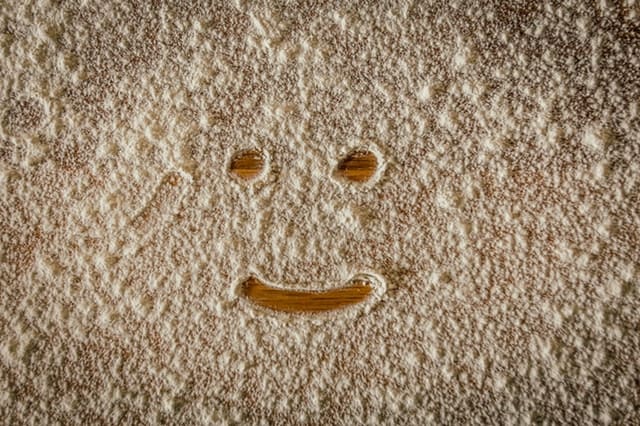
All the ingredients are measured as a percentage of the total flour. This is done because the flour is the most important and most abundant ingredient in dough. Other ingredients vary but the flour is always there in relatively large amounts.
The beauty is that once you have a baker’s percentage recipe, it instantly scales up or down to whatever amount of dough you want to make.
What’s more, understanding baker’s percentage will allow you to recognise the dough characteristics of any recipe before you even make it. You will also be able to form your own recipes and adjust quantities with ease.
You may have heard the term hydration used when referring to pizza dough. The hydration is basically the amount of water that is used in a dough recipe. It is always expressed as a baker’s percentage.
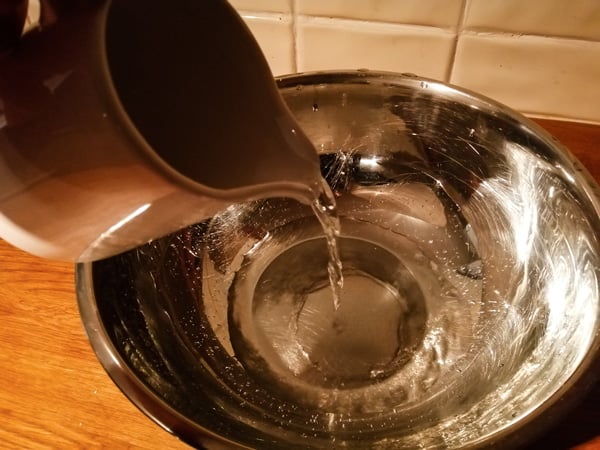
The hydration is generally the most important part of any recipe. Learning baker’s percentage will drastically improve your understanding of hydration and dough.
For more information on pizza dough hydration, click here.
The amount of salt in pretty much any bread dough will always be around 2-3%. Understanding baker’s percentage allows you to instantly get the correct amount of salt you should use in any pizza recipe (or bread recipe).
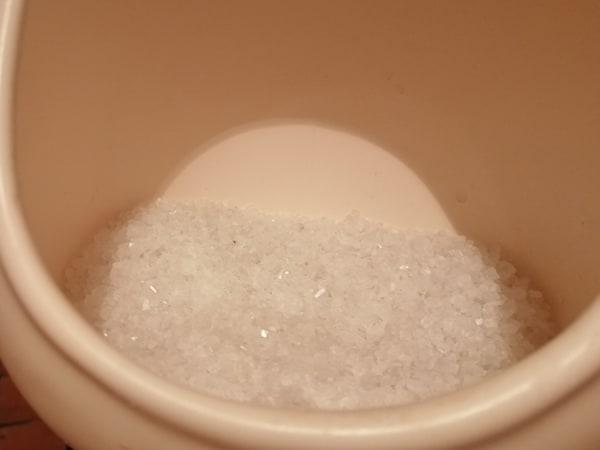
Some recipes will call for more or less salt than this but personally, I never stray from between 2 – 2.5%. Any less than 2% and the pizza becomes bland. Any more than 2.5% and the pizza becomes salty (and the quality of the dough is affected).
I would be wary of any pizza recipe that is outside the 2% – 2.5% salt range.
The amount of yeast we use will directly impact the length of fermentation (proving time). For example, 2% yeast (dried yeast) will prove roughly twice as quickly as 1% yeast. Understanding this allows us to adjust the yeast depending on our desired length of fermentation.
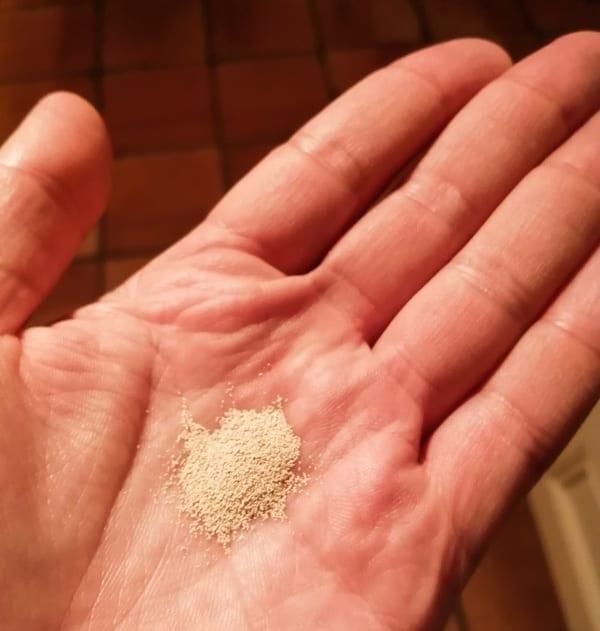
Generally, lower amounts of yeast produce a better dough. A longer fermentation improves the flavour and texture of the pizza crust.
However, using baker’s percentage for yeast allows to estimate and adjust the fermentation time in order to fit the dough making around our daily routine.
Let’s assume that we’re using 500g of flour in our recipe. We’re making traditional Neapolitan (Italian) pizza dough so there’s only 4 ingredients: flour, water, salt, and yeast. (Yes that’s right! No oil, sugar, or milk, or anything else.)
This is the recipe that we have (with each ingredient expressed as a baker’s percentage):
– 100% 00 flour
– 60% water
– 2% salt
– 1% yeast
(The quantities add up to more than 100% because we are comparing them to the weight of flour not the overall weight of dough)
This is a fairly typical recipe so let’s see how it works with our 500g of flour:
– 100% of 500g = 500g flour
– 60% of 500g = 300g water
– 2% of 500g = 10g salt
– 1% of 500g = 5g yeast
(In case you’re unsure, I’ll come back to how to calculate these percentages later.)
So now we have our ingredients in grams. Pretty straight forward, right?
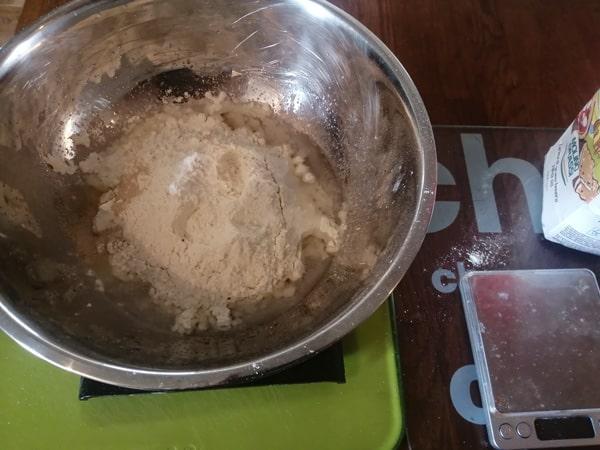
Now we can just put a bowl on our scales, tare the scales, and add the ingredients.
You may be asking “why is 100% flour included in the recipe? Of course, 100% of the flour is 100%!”.
This may seem confusing, but it is useful to include in a recipe because it tells us the type of flour the recipe requires.
Also, some recipes call for a combination of different flours. Often, semolina flour is also added to pizza dough as well as 00 flour.
This is a little more advanced, so we’ll leave that for now. However, because the ideal hydration (amount of water) will vary between types of flour, it’s still useful to include the type of flour the recipe uses.
In this recipe we’re using 00 flour, which is generally the best type of flour for Neoplitan style pizzas.
If you’re not friendly with mathematics, then the easiest way is to use the % button on your calculator or smart phone like this:
For 60% of 500 you would type 60%500
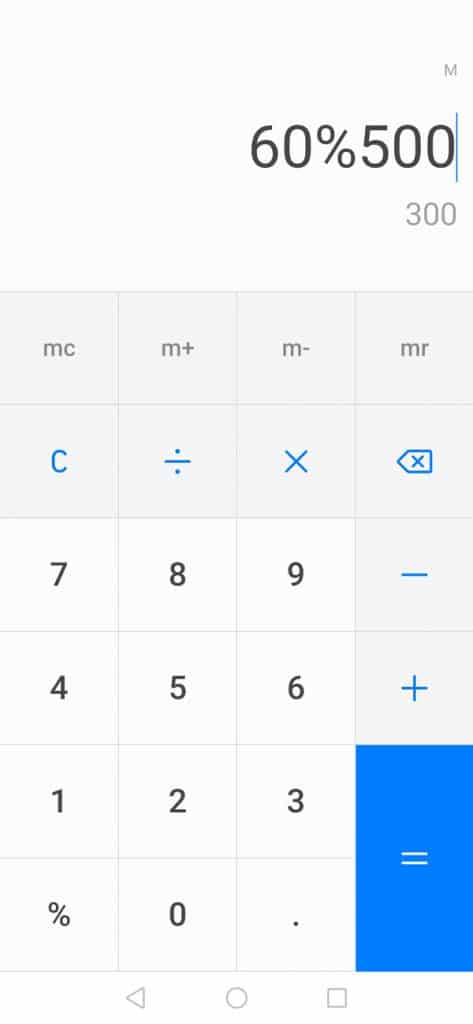
This should equal 300
Alternatively, for those of you that are more mathematically minded, you can do 0.6 x 500
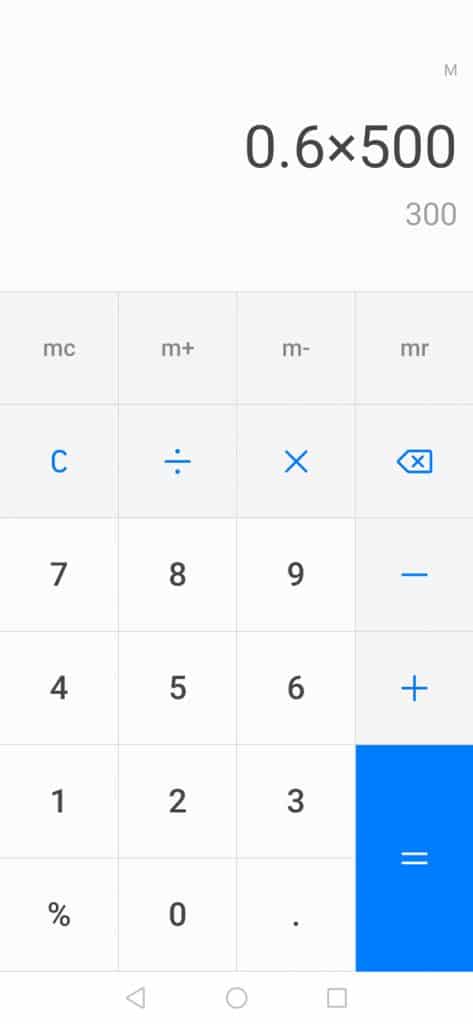
For 2% of 500 you would type 2%500
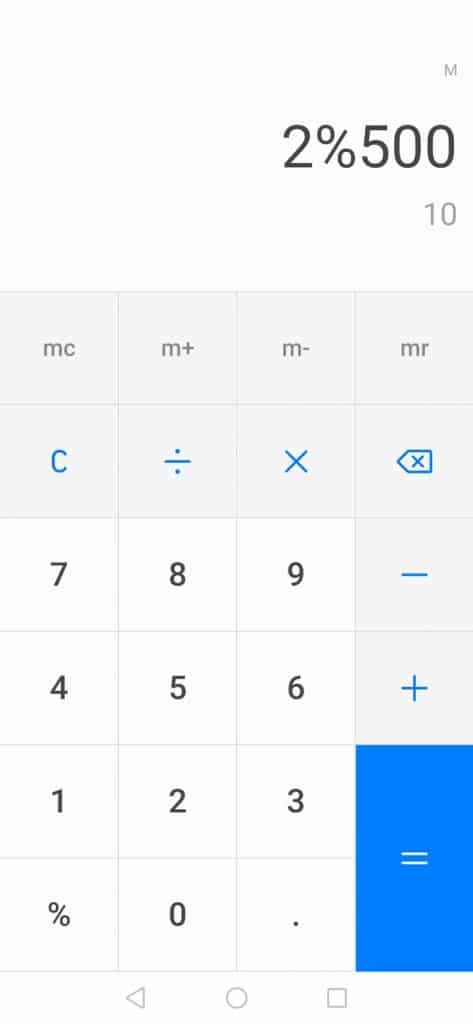
This should equal 10
If you’re using the other method, this would be 0.02 x 500 (don’t forget the extra 0 after the decimal – 0.2 x 500 would give us 20% not 2%!)
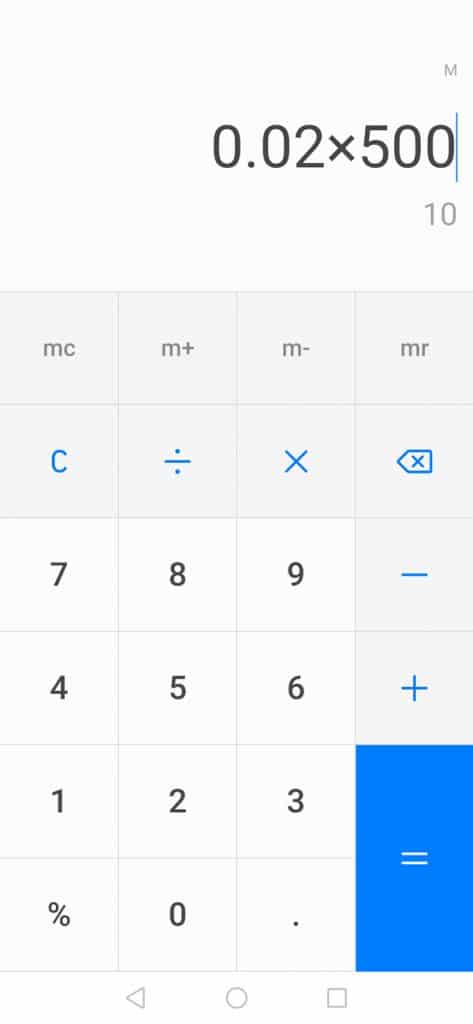
Use whichever method works best for you.
Rather than guessing the quantities before making several pizzas, I use this method which guarantees the perfect amount of dough. It also produces no waste at all.
It does take a bit of maths though so bear with me. If you don’t like the maths then feel free to skip over this bit, it’s not necessary. I’ll be bringing out recipes and guides for various pizza sizes and quantities in the near future.
Get your calculator/smart phone ready and here goes:
Let’s say we want to make 4 pizzas, each weighing 180g. The total amount of dough we need is:
180 x 4 = 720g of dough
Working backwards from this figure, we can now use the bakers percentages from the recipe we used earlier to calculate how much flour, water, salt, and yeast we need.
To get the amount of flour we need we can do the following calculation:
720/1.60 = 450g flour
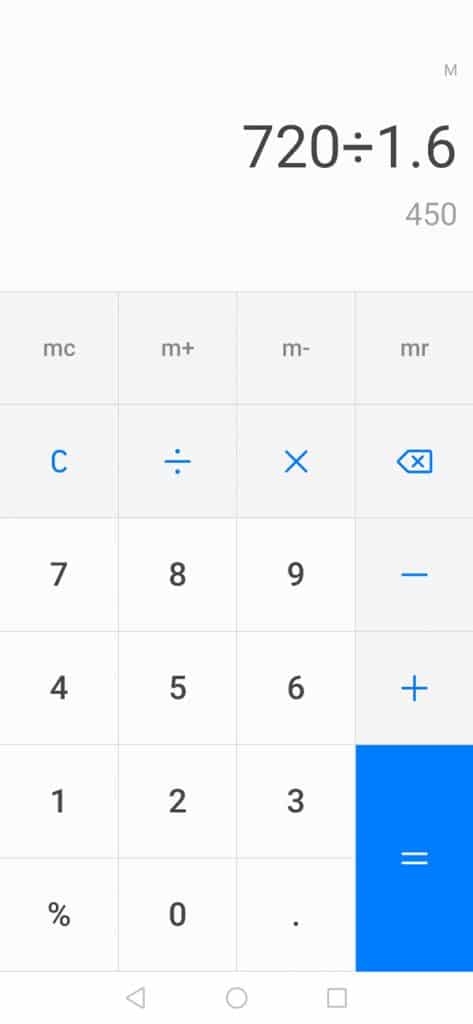
The 1.60 refers to our 60% hydration. If we’re using 58% hydration we would use 1.58.
Now we have our flour, we can simply follow the recipe in the same way we did earlier:
100% of 450g = 450g 00 flour
60% of 450g = 270g of water
2% of 450g = 9g of salt
1% of 450g = 4.5g of yeast
To quickly check that you’ve done it correctly you can add the flour and water together which should equal the initial dough weight that we were shooting for:
450g + 270g = 720g
Perfect!
The Eagle eyed amongst you will be saying “ah, but we’ve actually got more dough than we need because we didn’t allow for the salt and yeast”. Whilst this is true, the amounts are so small that it isn’t worth calculating and some dough is always lost in mixing anyway.
I love this method, it allows you to quickly calculate the quantities for any number of pizzas of any size.
There’s an app that I have found incredibly useful for calculating recipes. It’s called PizzApp+ and I’ve provided the links for it below:
For Android: PizzApp+ on Google Play Store
For iOS (Apple): PizzApp+ on the App Store
Using this app, you will never have to actually calculate the recipes yourself. It really is a great app! However, I still think it’s important that you understand baker’s percentage. This way you will know what to change each time you tweak the recipe.
I have to quickly mention weekendbakery.com which has a great article on poolish here.
Weekend Bakery is not a pizza website, it’s really about bread and cakes. However, some of the articles are great, especially the poolish article.
I actually learnt a lot of what I know about poolish from that article. I actually used to make bread before I started making pizza . And I started experimenting with poolish after reading their article. So thanks Weekend Bakery!
Hopefully, now you have a grasp of baker’s percentage, or baker’s percent. It will probably take a little while to get your head around it but once you do, everything will fit into place.
Before I understood baker’s percentages, every recipe seemed like magic. I had no idea why the quantities were how they were. I yo-yoed from recipe to recipe, never really understanding why each dough turned out differently.
Once you understand baker’s percent, every recipe will make sense. You will be able to predict dough characteristics from the recipe alone, and spot inconsistencies in recipes. What’s more, you will be able to write your own recipes and adjust recipes to suit yourself.
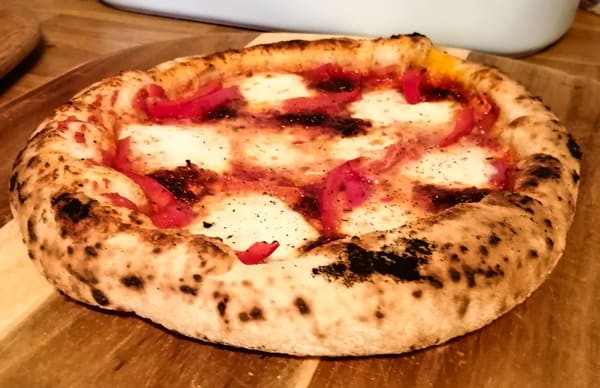
As well adjusting recipes to your taste, you will be able to tweak them for the type of flour you are using, the length of fermentation you want, and the oven you are using.
Trust me, learning baker’s percentage will transform your pizza making game!

I’m Tom Rothwell and I’m super passionate about all kinds of homemade pizza! In the last few years I've been on a quest to find the perfect pizza. Now I'm sharing what I've found out with the world!

If you're interested in hiring me for your event in the UK, feel free to check out my website with the link below.
Pizza Catering
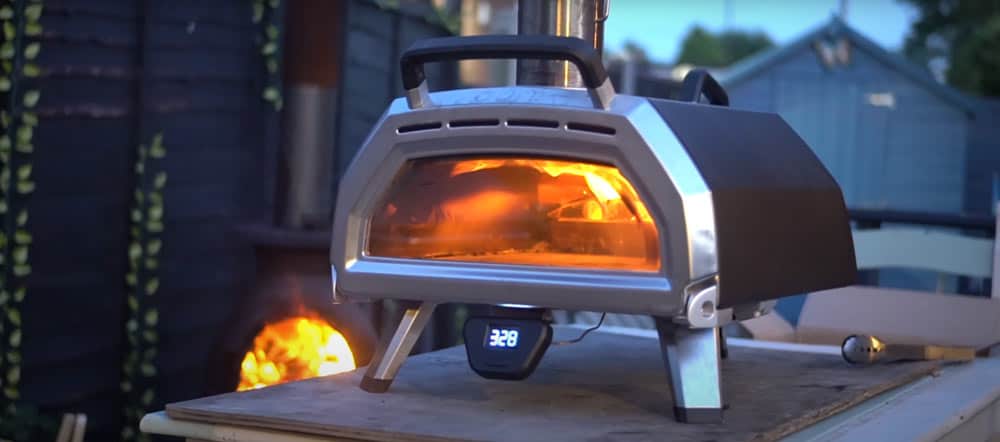
I often get asked what type of oven I use for my pizzas. Well, I use a pizza oven made by a company called Ooni.
The range of pizza ovens that Ooni offers is just brilliant. They cover all bases, and all price points. There's affordable and portable models such as the Fyra 12 Pizza Oven and then there's state-of-the-art models such as the Karu 16 Pizza Oven pictured below.
In all honesty, I would say that the oven makes a huge difference. If you're looking to make authentic Italian pizza, a pizza oven is a must.
By clicking the link below and purchasing from Ooni, you would be supporting this website. I've been using their ovens for a long time now and I wouldn't recommend them if I didn't believe in their products.
Time to make some amazing pizza!

I’m Tom Rothwell and I’m super passionate about all kinds of homemade pizza! In the last few years I've been on a quest to find the perfect pizza. Now I'm sharing what I've found out with the world!

If you're interested in hiring me for your event in the UK, feel free to check out my website with the link below.
Pizza Catering
No sugar for the yeast to eat ??
Is this to leven more slowly?
Hi Mike
Yes that’s correct. Sugar would speed up the leavening (proving) process and result in a sweeter dough. Neapolitan dough should only have a hint of sweetness to it from the natural sugars. And it should have a hint of sourness from the long fermentation.
In addition, adding sugar will brown the crust more when cooking. If you are using a very low powered oven this could help. But for Neapolitan pizza, cooked at very high temperature, the introduction of sugar would likely lead to burning.
Thanks for the comment
The information about Baker’s Percentages is invaluable!
Thanks for sharing this. In keeping with my wife’s request for thin crust pizza, I’m going to limit the second proofing.
I suspect that this will make pizza dough and bread dough’s in general, much easier, and with much more logic to it!
Thanks again,
Doug
Thank you Doug! It can seem very confusing but once you get your head around it you will be able to adjust any recipe to your liking.
And yes, it will help with all types of bread dough!
I’ll look into doing a recipe for thin crust pizza. I would recommend using a rolling pin rather than limiting the proofing. This way you should still be able to retain some nice texture in the dough.
Good luck!
Why is it impossible to get the recipe in cups or teaspoons?
Hi Meg. Cups and teaspoons are a very inaccurate way of measuring ingredients. Cups and teaspoons all vary in size, as well as how much you fill them. Usually they are fine for normal cooking but when it comes to baking, tiny discrepancies in ingredients lead to huge differences in outcomes.
When it comes to pizza dough, a 4% difference in hydration, for example, is huge. It’s the difference between a dry dough and a wet dough. When making 2 pizzas, 4% equates to about 10g of water. Unless your ingredients are weighed, obtaining an accuracy within 10g is actually almost impossible to achieve.
In addition, when weighing out yeast, quantities of as little as 0.4g are required for a long prove. This accuracy is just not possible to achieve in teaspoons. Even a good guess could be out by 100% or more.
Until you have made hundreds of pizzas, I recommend that everyone weighs their ingredients with digital scales to be as accurate as possible. This will get you the best results in the shortest amount of time. If you make a good dough, you will be able to replicate it exactly next time. If you make a bad batch, you will know what to change for next time.
I highly recommend giving grams a go! It’s super easy!
SO how would you calculate the percentage of Poolish in this calculation? If guess if I used all the water in the poolish with the same amount of dough, I wouldnt have any water to add, once the poolish proved?
Hi Mike, you could use all the water in the poolish but then it technically wouldn’t be a poolish as a poolish is 50% water and 50% flour. Also, you would still need to add the remaining flour. So I think it’s just as easy to add the water and flour together once the poolish has proved.
The percentage of poolish is calculated by comparing the weight of flour in the poolish to the weight of flour in the final dough. Typically, 50% of total flour in poolish is a good amount. For example, if your recipe calls for 600g flour total, your poolish would be 300g flour (50% of total flour) and 300g water (100% poolish hydration). Once this has proved you would then subtract the water and flour in your poolish (300g & 300g) from the final recipe in order to determine the weight of additional ingredients.
I hope this makes sense. I assume you’ve check out my poolish article here?
Cheers
Hey Tom-
We just got an Ooni and we are still learning but we seem to struggle to get the bottom crust crispy and the edges not burned. We can do great edges but then the bottom isn’t crispy enough. Tips?
Hi Ann, the Oonis are really designed to make Neapolitan style pizzas which don’t have a crispy base, it should be soft. It sounds like you’re doing well but just need to remove the pizza before the crusts burn.
If you want to try more of a NY style pizza with a crispy base, you could try cooking at a lower temperature, for much longer. I haven’t really tried this with the Ooni to be honest but I probably will do at some point. I would recommend trying a temperature of around 300C/570F and see how you get on. I have made pizzas in my regular oven at a similar temperature (260C/500F) and they’ve turned out great, much crispier base.
Good luck!
Hi Tom!
How much time you leave the dough for proof for this recepie?
The article was the best!
Thanks!
Hi Gizem. I recommend you check out my pizza school series here. There, I provide a detailed recipe including prove time and a video showing every step. The first part is on the mixing and then the following parts go into kneading and shaping.
Good luck!
What about if using a sourdough starter? How will that change percentages?
Hi Stephen, good question but it’s complicated! I’m planning on doing a series on sourdough in the future so stay tuned for that.
In general, the amount of starter you use is measured as a ratio of the flour in the starter to the total flour in the recipe. So if your recipe calls for 500g flour, a 20% starter would be 100g flour, 100g water.
The percentage you choose will depend on many factors, including how active your starter is and how long you want to prove for.
When calculating the final percentages, you will have to take into account the flour and water that is in your starter.
I hope this helps a little but there’s only so much I can do without going into a lot of detail.
Good luck with it!
Hello! For the percentage of yeast, do you resort to fresh or dry yeast? And how can we calculate grams? For example, do we have dry yeast or the corresponding fresh yeast?
Hi Georgia, good question. I tend to use dried yeast since it’s easier to get hold of and lasts longer. I do enjoy the flavour of fresh yeast more though. Feel free to check out my article on dried vs fresh yeast here.
For converting quantities, you typically need to use twice as much fresh yeast as dried yeast. So if a recipe calls for 1g of dried yeast, you’ll need 2g of fresh yeast. And vice versa.
Hope that answers your question. Good luck!
Hi Tom thanks for your excellent article and explanation for the bakers percent in laymen terms. What are your thoughts on freezing the fermented dough for re-use later? I use the Bakerstone gas pizza oven with excellent results. Regards from New Zealand
Hi Bert, no problem at all! I don’t freeze my dough personally as I like to make it fresh, though I think it should be fine.
If I have some dough left over I tend to re-ball it and store it in the fridge for the next day. But feel free to experiment with freezing and let me know how you get on!
Good luck!
Hi! I just downloaded the pizzapp and. I’m curious how I determine my poolish ingredient amounts? Maybe it was explained, but I guess I’m still a little confused! Thanks in advance!
Hi Ben, to be honest I haven’t used the pizzApp for poolish. With poolish I find it best to just use instinct. After making poolish many times, you’ll get good at knowing how to use it.
If you haven’t already, check out my article on poolish here. That should help to get you started, there are some good rules of thumb you can use that are discussed in the article. Good luck!
Great article Tom, thanks.
Question; so if I’m using poolish, I would deduct the weight of the poolish (50/50 flour/water) from the recipe weight percentages, then just add the difference once the poolish is ready? Thank you sir!
Hi Dennis, yes that’s basically correct. You have to include the water and flour in the poolish in the total ingredients to calculate the overall hydration. It is a bit tricky but gets easier with practice.
If you haven’t already, be sure to check out my article on poolish here. Thanks Dennis!
Hi, I think your yeast calculation is off in your example above. 5g of yeast for 500g of flour is alot. I think the calculation should be 500g * 0.1% of the flour and not 1%. should be 0.5 grams of yeast. Correct me if I am wrong.
Hi Marie-Christine, it was just an example to show how the calculations work. I chose to use 1% for the yeast to keep it simple.
You are correct that for long proves you would normally use less yeast but there is no correct amount. The amount of yeast you need will depend on how long you are proving for, which type of yeast you are using, and the temperature of your room.
Feel free to check out my pizza dough calculator here which should help you to get in the right ballpark when it comes to the yeast (and everything else).
Thank you for the comment.
So thanks for this, I’m somewhat getting the baker’s percentage. Have to play with it more though. Here is my issue. I have a pizza dough I love, but the recipe calls for cups and teaspoons, etc. How can I convert the recipe to use the bakers’ math procedure? It calls for 3 cups of AP flour, and 3 cups of bread flour. Please help, as I love the taste of this dough.
Hi Beth, I’ve just replied to your previous comment on poolish before seeing this comment.
To convert, you need to know the amount of water the recipe calls for. Let’s assume the recipe calls for 4 cups of water. Then you would just calculate the percentage of water compared to flour, as below.
4/6 * 100 = 67%
This means that your recipe would be 67% hydration. (This is generally too high for Neapolitan style pizza by the way.) Be sure to check out my article on pizza dough hydration here if you haven’t yet.
When it comes to using teaspoons, calculating percentages isn’t really possible. For this, I use some digital scales that are accurate to 0.01g. These are easy to find online and relatively cheap. Just search for “accurate digital scales”.
Thank you for the question.
In line with % when adding yeast. Where would a starter fall inline with the bakers % same as yeast % ?
Hi Dave, sourdough is a tricky thing and there is no rule of thumb really. But generally, between 10% – 50% of the weight of total flour as starter is used.
Stay tuned for my sourdough series which is coming out soon!
Thanks for the question.
How do I calculated how much olive oil I have to add using the bakers percentage?
Hi Ben, I don’t recommend adding olive oil if you’re making Neapolitan style in a pizza oven as it can lead to burnt crust. But olive oil can help to achieve some browning if cooking at lower temperatures.
To account for the olive oil, simple substitute some of the water in the recipe for olive oil. Hope this makes sense. Enjoy!
Fantastic website!! Lot’s of great information and I really appreciate the huge amount of work you’ve put into it!. I have a simple question: How do measure such small amounts of yeast? I’m using Active dry yeast and my kitchen digital scale doesn’t measure that small of an amount, like .6 grams.
Hi Joe, I’m so glad this website helped you, it’s great to know it’s been worth the effort! I highly recommend some digital scales that are accurate to 0.01g – “precision scales”. These are relatively inexpensive online (amazon etc), they cost around $10-15. Thanks for the question!
Fantastic and very informational… I am 84 years old and I have been making dough for many years but i always love to learn more.
Wow Anthony! Very impressive! Keep up with the pizzas!
I learned so much. Can you please share the baker’s percentages for New York style pizza base containing sugar and oil?
Hi Elize, I have a recipe for New York pizza here, with all the revelant baker’s percentages included. Good luck!